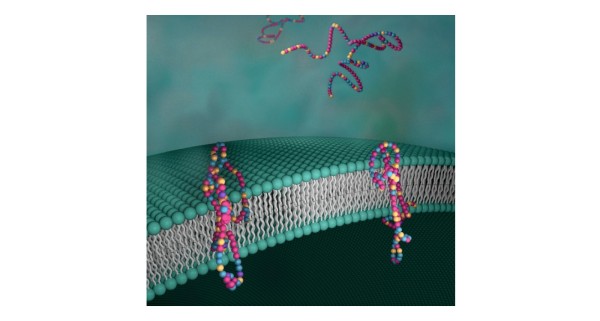Artificial Proton Channels through Membranes

Scientific Achievement
Newly synthesized heteropolymers were shown to mimic transmembrane channel proteins with proton transport rates similar to those of natural channels.
Significance and Impact
Biology has evolved many different proteins that transport ions across cellular membranes in a highly selective fashion. Here, heteropolymers composed of four different chemical blocks were created that mimic this functionality, pointing toward new ways for creating artificial systems inspired by nature.
Research Details
- A multidisciplinary approach integrated synthesis, transport measurements, spectroscopy, imaging, molecular dynamics simulation and small-angle neutron scattering (SANS) to characterize the structure and function of the heteropolymers and their interaction with lipid bilayer membranes.
- SANS was used to characterize the structure of the polymer channels in the bilayer.
“Single-Chain Heteropolymers Transport Protons Selectively and Rapidly,”
Tao Jiang, Aaron Hall, Marco Eres, Zahra Hemmatian, Baofu Qiao, Yun Zhou, Zhiyuan Ruan, Andrew D. Couse, William T. Heller, Haiyan Huang, Monica Olvera de la Cruz, Marco Rolandi & Ting Xu,
Nature, 577 (7789), 216-220 (2020). DOI: 0.1038/s41586-019-1881-0 https://www.nature.com/articles/s41586-019-1881-0



